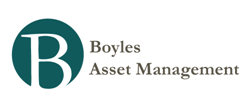Hussman Weekly Market Comment: Warning: Goat Rodeo
Goat Rodeo - Appalachian slang for a chaotic, high-risk, or unmanageable scenario requiring countless things to go right in order to walk away unharmed.
Over the years, of the most frequent phrases in these weekly comments has been "on average." Most of the investment conditions we observe are associated with a mix of positive and negative outcomes, so rather than making specific forecasts about future market direction, we generally align our investment position in proportion to the average return/risk outcome, recognizing that the actual outcome may be different than that average in any particular instance.
Increasingly however, we have observed sets of conditions that are so heavily skewed toward bad outcomes that they deserve the word "warning" (see Extreme Conditions and Typical Outcomes near the 2011 peak, Don't Mess with Aunt Minnie before the 2010 market break, Expecting a Recession in late 2007, A Who's Who of Awful Times to Invest at the 2007 market peak, and our shift from a modestly constructive investment position to a Crash Warning in October of 2000). While the downturns that followed have provoked increasingly large and desperate actions of central banks to kick the can down the road by preventing debt restructuring and financial deleveraging (in some cases by violating legal constraints - see The Case Against the Fed ), the fact is that the S&P 500 has achieved a total return of just 1.2% annually over the past 12 years, as a predictable outcome of rich valuations and still-unresolved economic imbalances.
I could admittedly do better, and would certainly have captured more upside from temporary speculation, had I committed myself to the principle that central banks will act strictly to defend the bondholders of the banks they represent, even if it means trespassing into fiscal policy, subordinating public interest, empowering the worst stewards of capital, violating legal restrictions, and inviting long-term instability. Still, none of those actions improve the long-term outcome for the markets, and more importantly, none have prevented repeated and serious downturns from occurring, despite all the can-kicking.
Once again, we now have a set of market conditions that is associated almost exclusively with steeply negative outcomes. In this case, we're observing an "exhaustion" syndrome that has typically been followed by market losses on the order of 25% over the following 6-7 month period (not a typo). Worse, this is coupled with evidence from leading economic measures that continue to be associated with a very high risk of oncoming recession in the U.S. - despite a modest firming in various lagging and coincident economic indicators, at still-tepid levels. Compound this with unresolved credit strains and an effectively insolvent banking system in Europe, and we face a likely outcome aptly described as a Goat Rodeo.
My concern is that an improbably large number of things will have to go right in order to avoid a major decline in stock market value in the months ahead. We presently estimate that the S&P 500 is likely to achieve a 10-year total return (nominal) of only about 4.7% annually, which reduces the likelihood that further gains will be durable even if they persist for a while longer. In the context of present valuations and a probable Goat Rodeo in the months ahead, my impression is that the recent market advance may be a transitory gift.
- Hussman Weekly Market Comment: Low-water Mark
As of Friday, our estimates of prospective return/risk for the S&P 500 have dropped to the single lowest point we’ve observed in a century of data. There is no way to view this as something other than a warning, but it’s also a warning that I...
- Hussman Weekly Market Comment: An Angry Army Of Aunt Minnies
As of Friday, the S&P 500 was within 1% of its upper Bollinger band at virtually every horizon, including daily, weekly and monthly bands. The last time the S&P 500 reached a similar extreme was Friday April 29, 2011, when I titled the following...
- Hussman Weekly Market Comment: Unusual Drawdown Risk
Of course, our present concerns are based on a smaller and more negative subset of conditions that we've seen even less frequently - presently featuring not just "overvalued" and "overbought" conditions, but adding overbullish sentiment, modest but...
- Hussman Weekly Market Comment: Hard-negative
With the exception of extreme market conditions (see Warning- Examine All Risk Exposures , and Extreme Conditions and Typical Outcomes ), I try not to wave my arms around about near-term market risks, but I think it's important to cut straight to...
- Hussman Weekly Market Comment: Don't Mess With Aunt Minnie
Over the years, I've noted that certain subsets of market conditions - occurring together - are associated with very specific outcomes, such as oncoming recessions, abrupt market weakness, strength in precious metals, and so forth. Such indicator...

